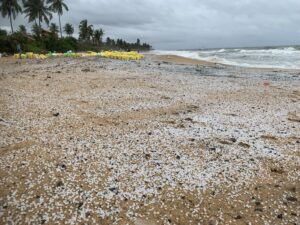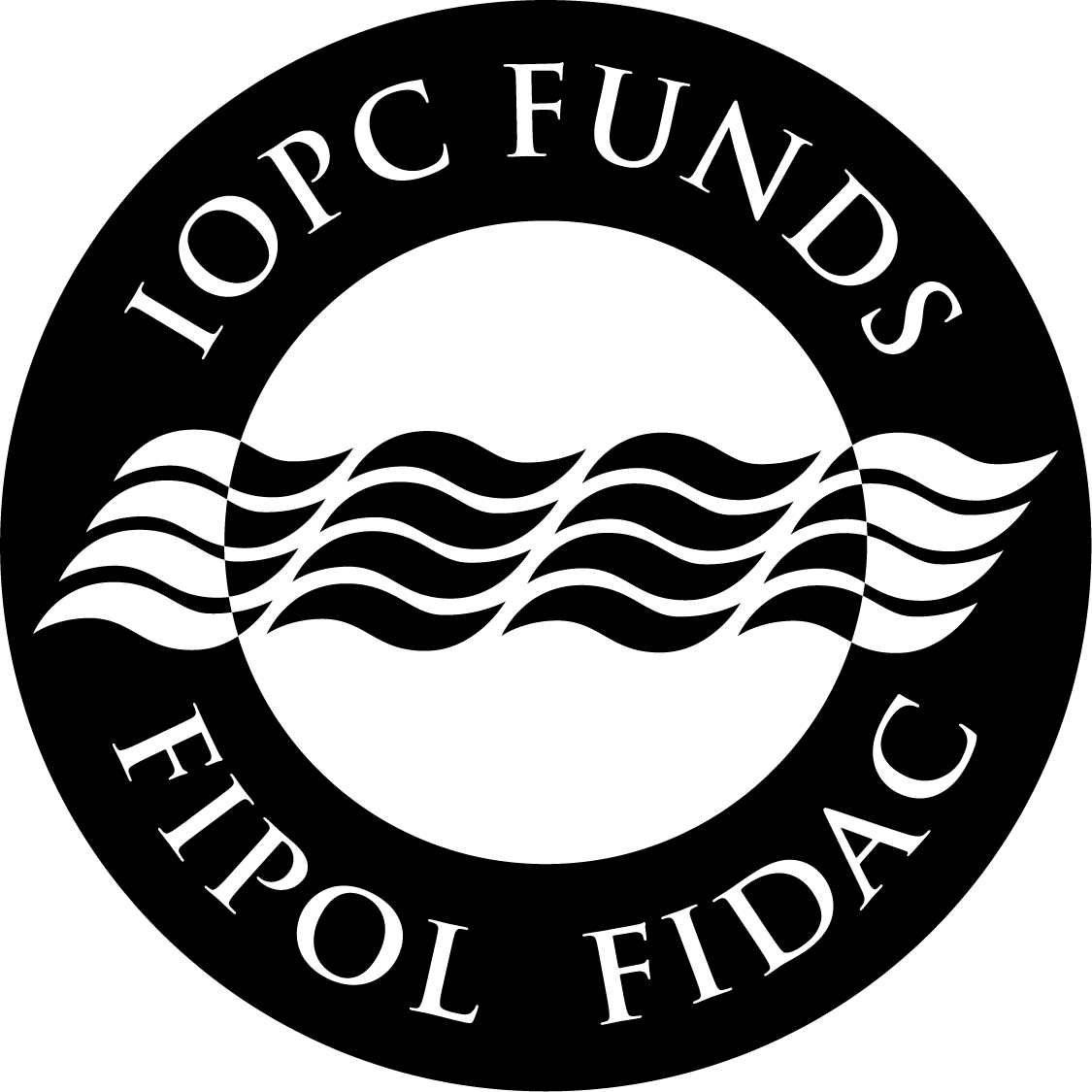Are plastic pellets HNS?
Posted: 26/03/2025
By: IOPC Funds
The IOPC Funds has been receiving a number of questions about incidents involving plastic pellets. These are addressed in the below guidance.

Credit: ITOPF
What are plastic pellets?
Plastic pellets are small pieces of plastic typically between 1 and 5 mm in diameter that are produced by the petrochemical industry and widely used as raw material in the creation of plastic products. Plastic pellets are transported in various forms including flakes, granules and powders and can be referred to as resin or nurdles. Plastic pellets are shipped in large volumes around the world, usually in containers. They are generally stored in liners or plastic or paper bags within containers. Pellets can be released into the marine environment due to damage to the packaging or containers, or in cases where containers are lost at sea. When plastic pellets enter the marine environment, they can cause environmental damage including harm to wildlife, and negatively impact fishing, aquaculture and tourism.
Are plastic pellets HNS?
No. The vast majority of plastic pellets are not classified as HNS under the 2010 HNS Convention as they are not currently included in any of the IMO Conventions or Codes that define HNS (see Article 1.5 of the 2010 HNS Convention). While plastic pellets are not considered HNS, the international community has become increasingly concerned about their potential impact if released into the marine environment. In 2021, the X-Press Pearl caught fire and sank releasing 11 000 tonnes of pellets off the shores of Sri Lanka. The pellets proved difficult to clean up due to their small size, buoyancy and wide dispersal. There was also concern about the potential environmental impact, particularly related to marine species confusing the pellets with food and the leaching of toxic chemicals from pellets into the environment. Following the X-Press Pearl incident, the IMO’s Marine Environmental Protection Committee (MEPC) agreed to take actions to address the risks posed by the transportation of pellets in containers by developing more rigorous requirements for the packaging, labelling, loading, transportation, unloading and emergency response.
IMO has agreed a two-stage approach to advance its work on plastic pellets:
- It adopted MEPC.1/Circ. 909 on Recommendations for the carriage of plastic pellets by sea in freight containers which contains recommendations for the safe carriage of plastic pellets in containers, including best practices relating to packaging, identification and storage; and
- It agreed to develop mandatory measures to address the risks posed by the carriage of plastic pellets in containers taking into account experience gained through the implementation of the recommendations in the Circular.
Early experience with MEPC.1/Circ.909 has been positive, particularly in respect of guidance relating to improving the quality of packaging material and stowage of the containers underdeck or in sheltered areas.
Discussions regarding an appropriate mandatory instrument are ongoing at IMO within the PPR SubCommittee, which has been instructed by the MEPC to conduct an analysis of the potential mandatory instruments that could be amended and the associated implications, with a view to MEPC making a policy decision on the preferred mandatory instrument at a future session.
To summarise:
- Plastic pellets are not currently classified as HNS and are not currently covered by the 2010 HNS Convention.
- As a result, ship and cargo owners would not be liable to financial compensation for any damage caused by plastic pellets under the 2010 HNS Convention once it enters into force.
- IMO recommendations for the safe carriage of plastic pellets in MEPC.1/Circ.909 are now in place and should reduce the risks of incidents involving plastic pellets through improved packaging and stowage.
- IMO has not made any final decisions regarding mandatory measures for the carriage of plastic pellets. Discussions are ongoing and will be informed by experience gained by applying the recommendations.
- Most of the options under consideration would not have the result of classifying plastic pellets as HNS. However, all of them would subject the transportation of plastic pellets to more stringent regulatory requirements than exist at present and reduce the risk of incidents. This includes the option of incorporating plastic pellets into the regime in the IMDG Code which would result in their being classified as HNS.
The above article can be downloaded here.
